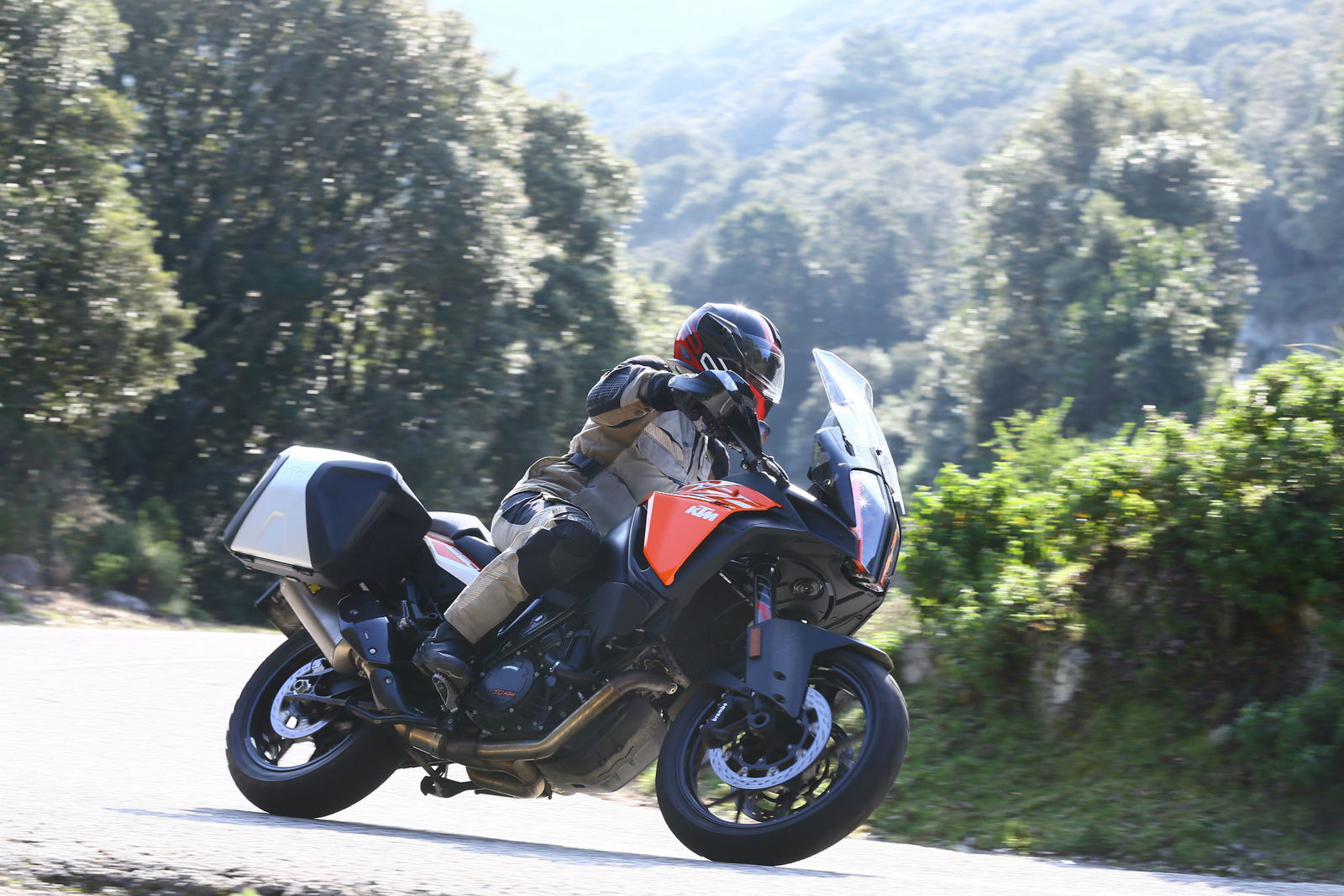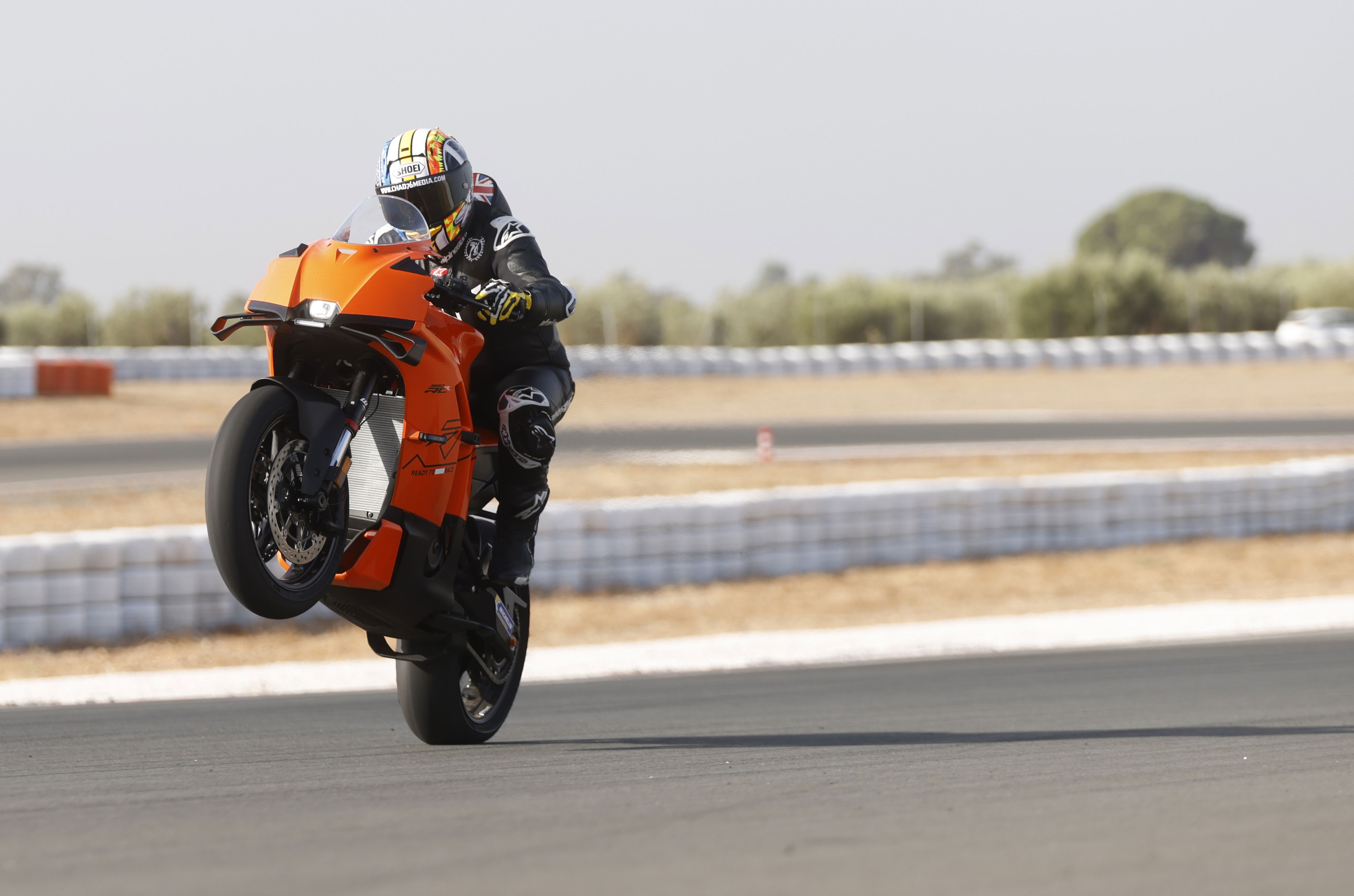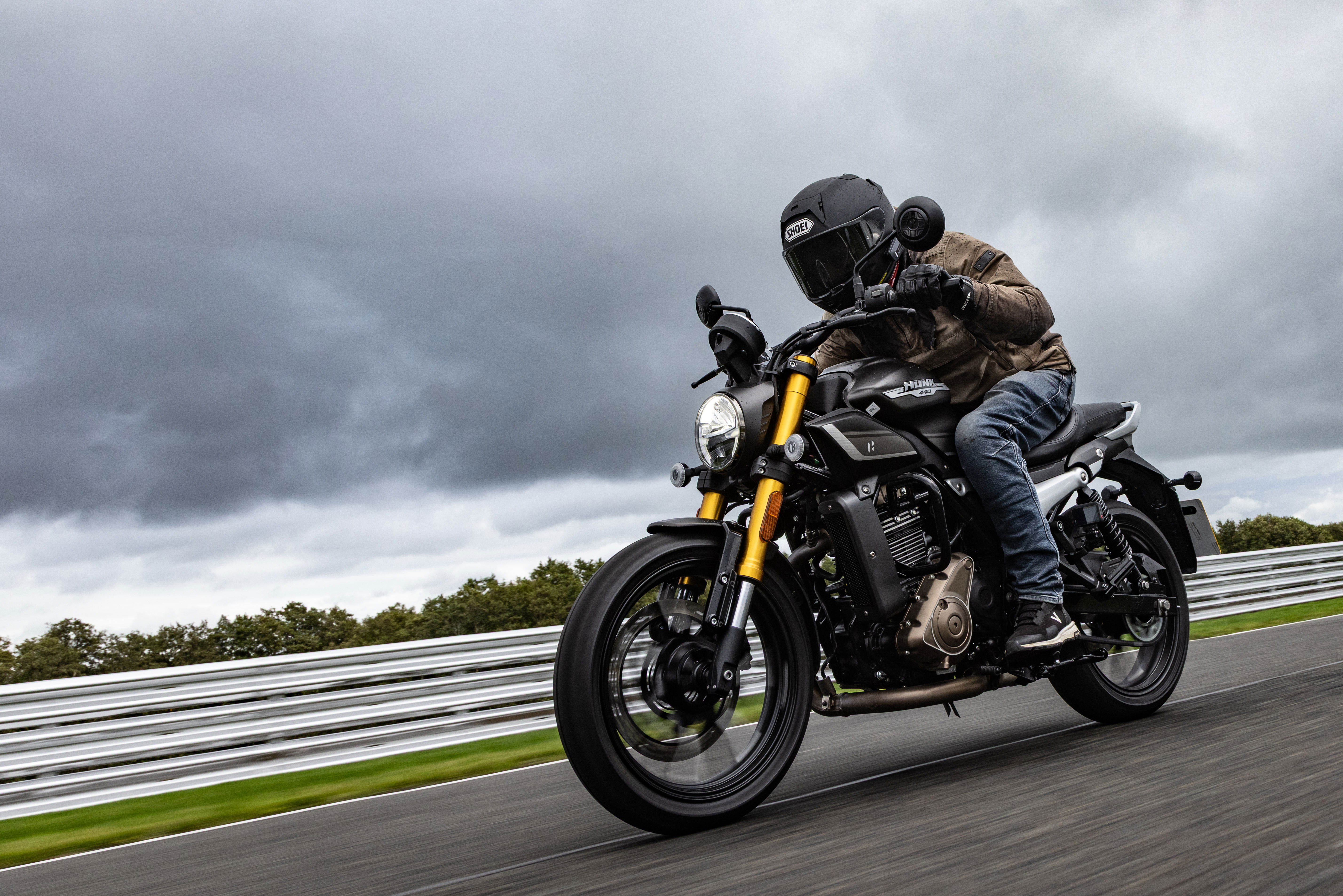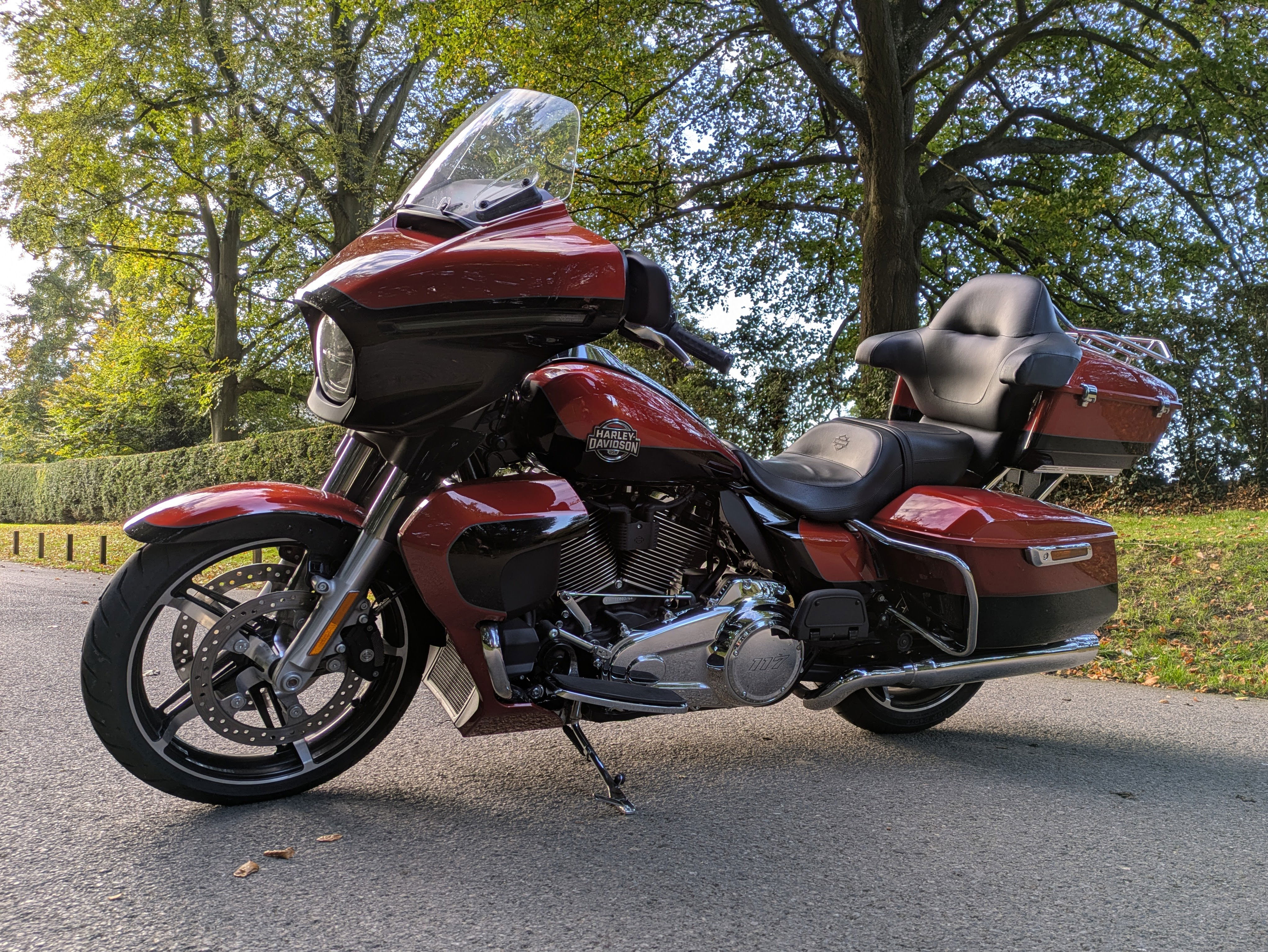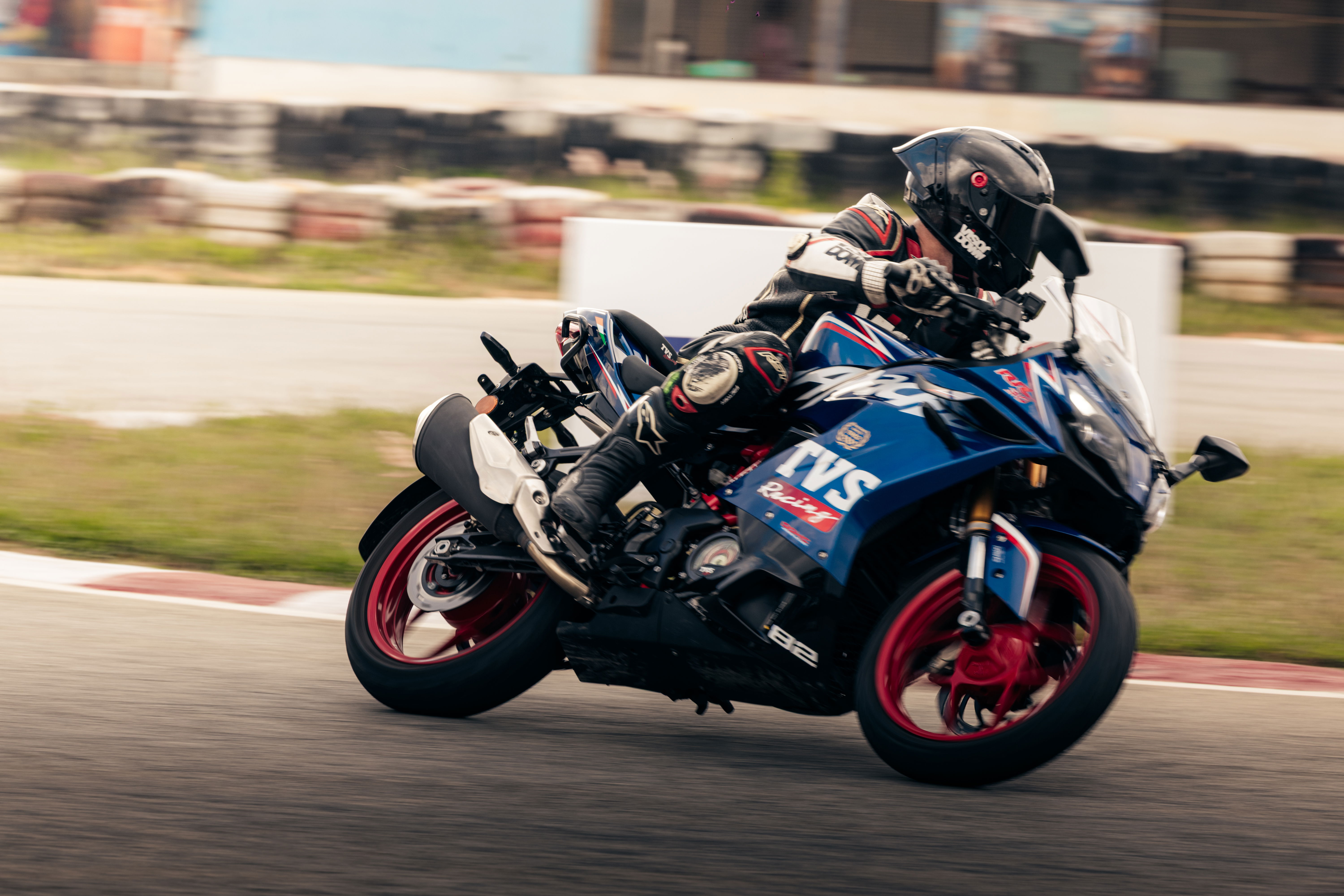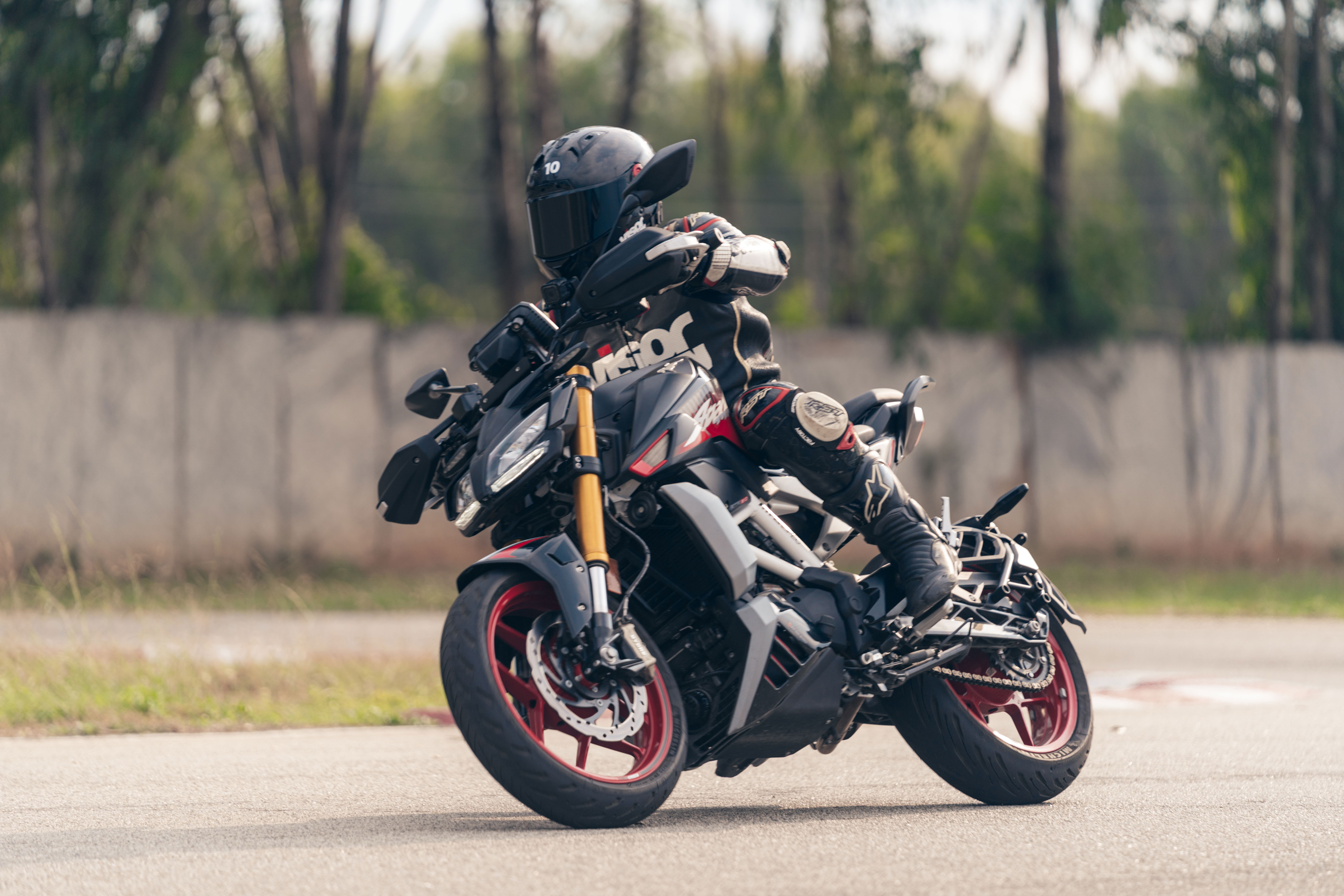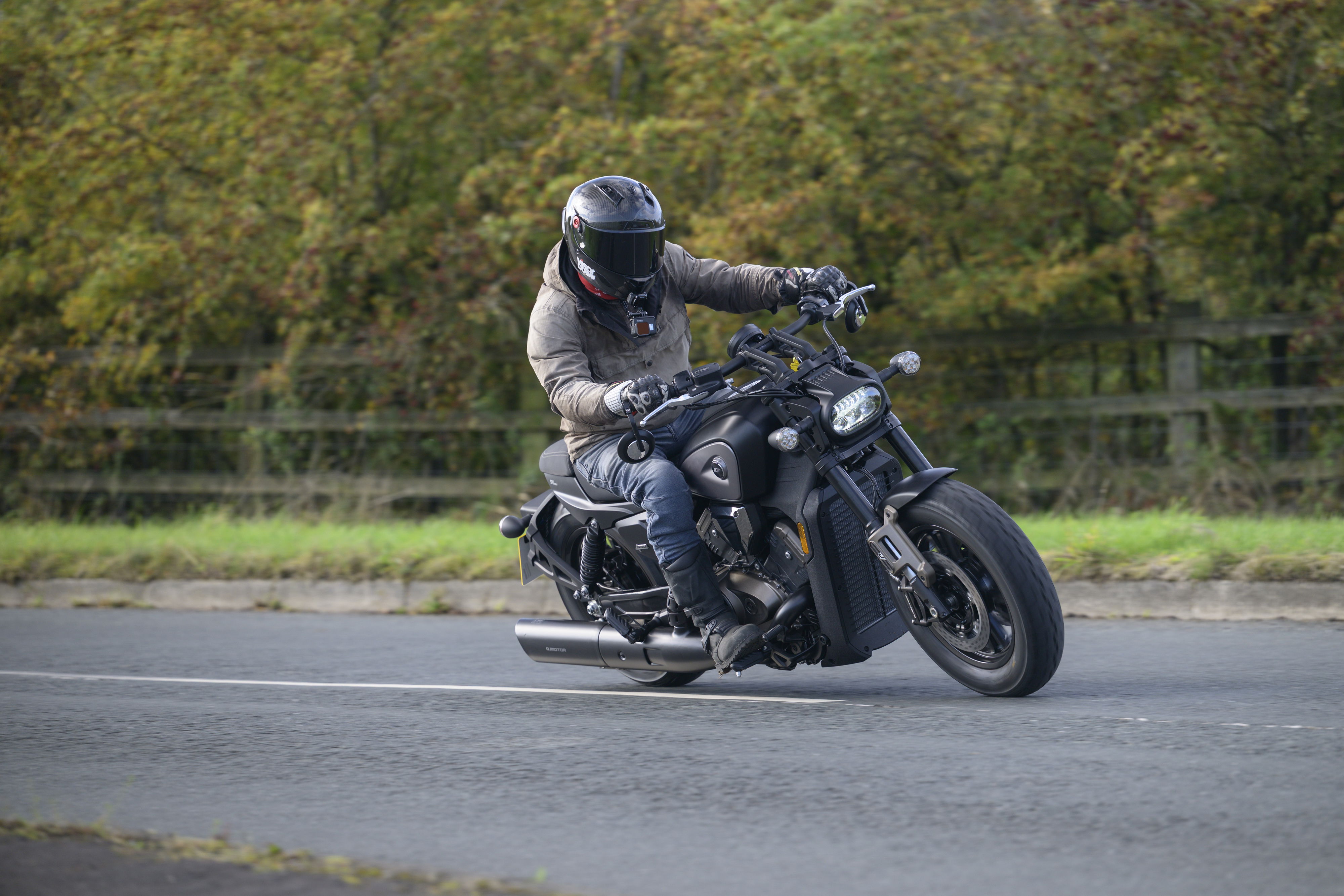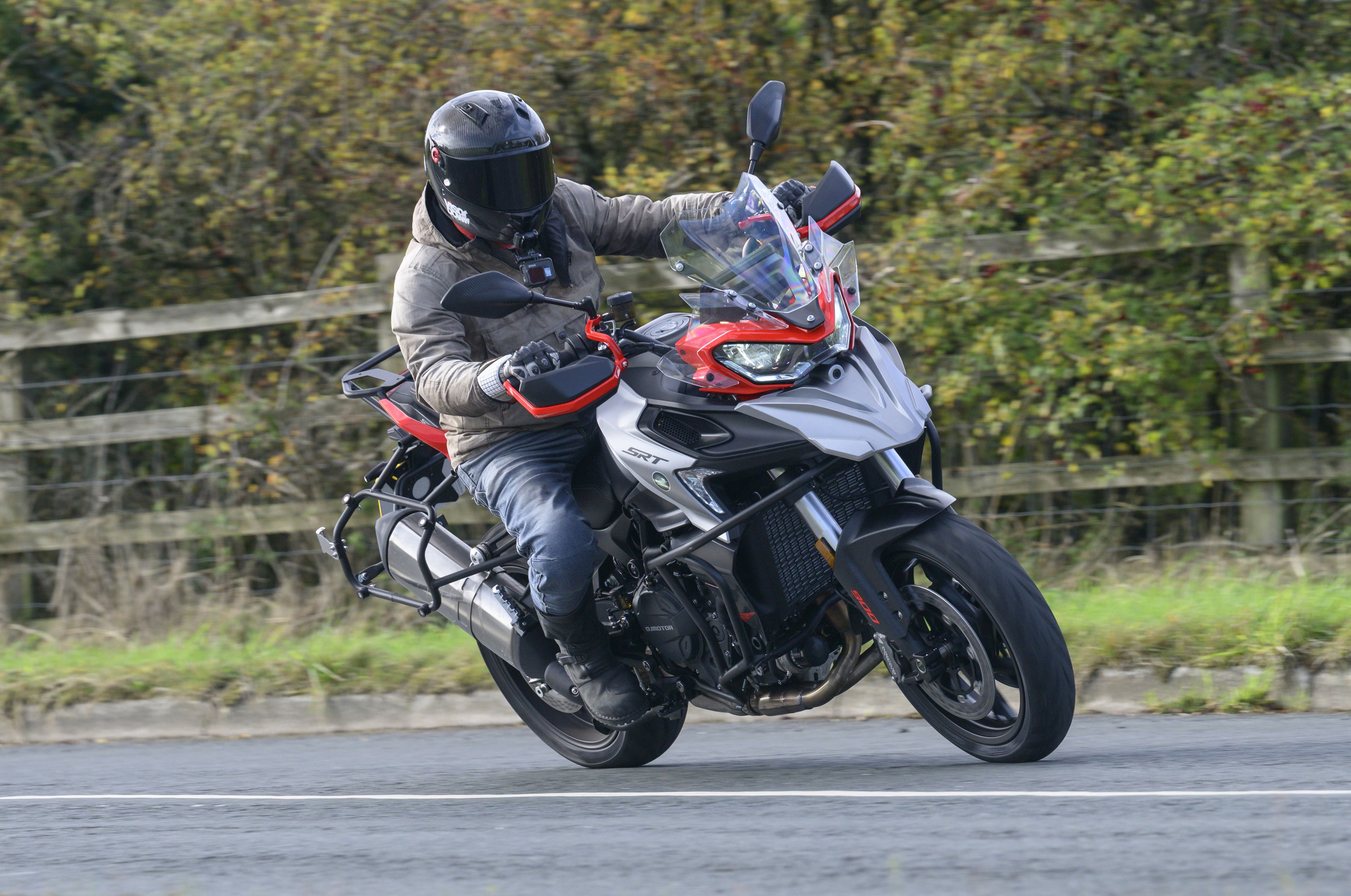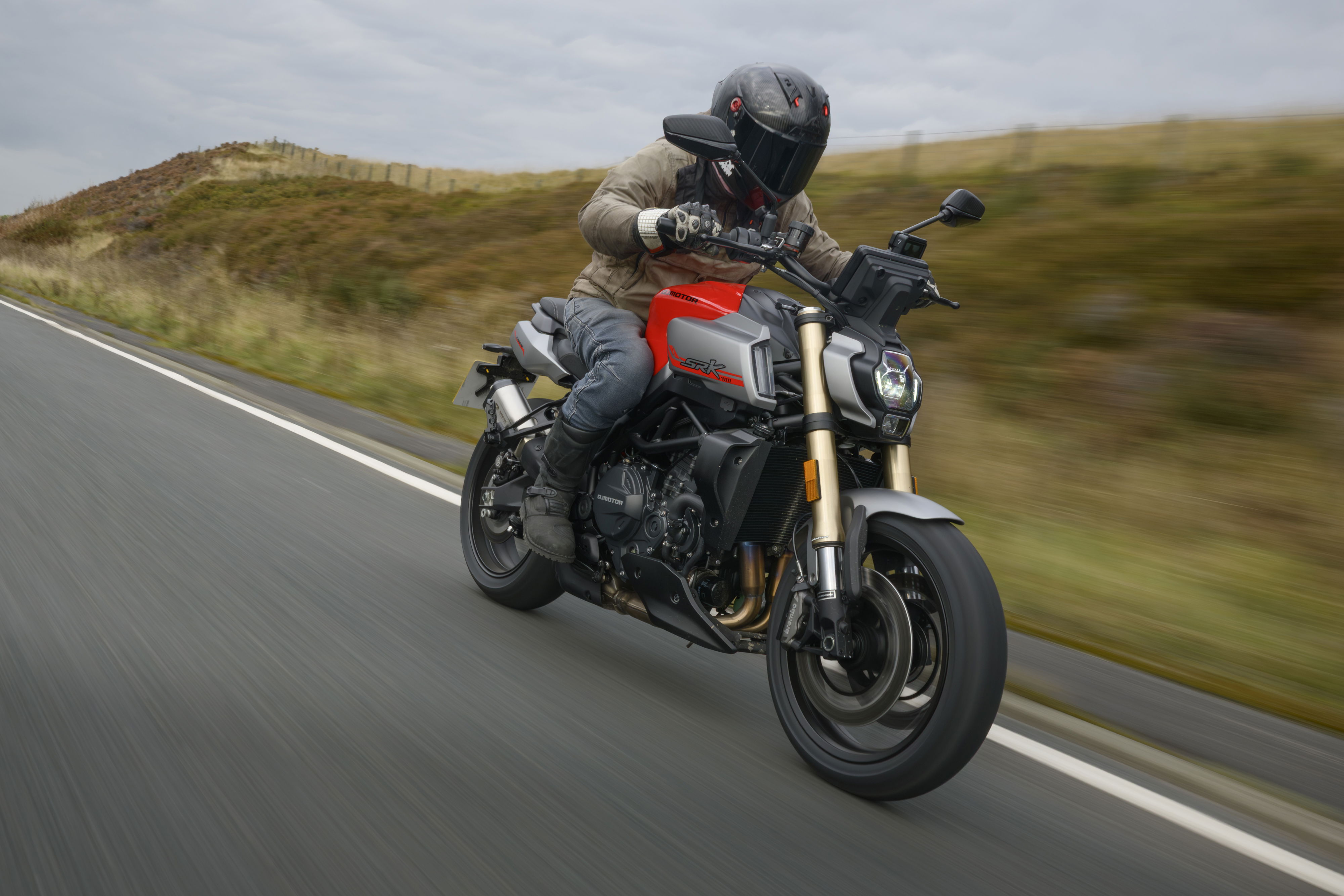First ride: Ducati SuperSport / S review
Ducati's every day sports bike strikes a perfect balance between sporting ability, accessibility and versatility

LAST WEEK I went to visit my old man for an hour of tea drinking and tyre kicking in the garage.
He won’t like me telling you that he’s eligible for an older person’s bus pass, but jumping on a double decker isn’t his style because he owns a few bikes, one of which is a Ducati 998 and the day before my visit, he’d fitted a set of bar risers to make it more comfortable and practical for him.
I told him that he should look at something more suitable to the kind of riding he does, the kind of rider he is and the kind of comfort and practicality he’s after. Something sporty, but a little more accommodating. Something like the new Ducati SuperSport.
Ducati calls the new SuperSport its ‘versatile sports bike’ and a look at the front end, with its adjustable screen and high set bars indicates that the isn’t as uncompromising as the Panigales it shares more than a passing resemblance to.
Where the bikes in the Panigale family are the weapons of choice for track-attack, the ergonomics, price and performance that make those bikes so suited to the circuit also mean that they’re not always the friendliest, most accessible machines for riders who spend most of their time on the road.
Here’s where the SuperSport comes in – it’s intended to be the machine that bridges the gap between sports riding and genuine, daily useability and comfort.
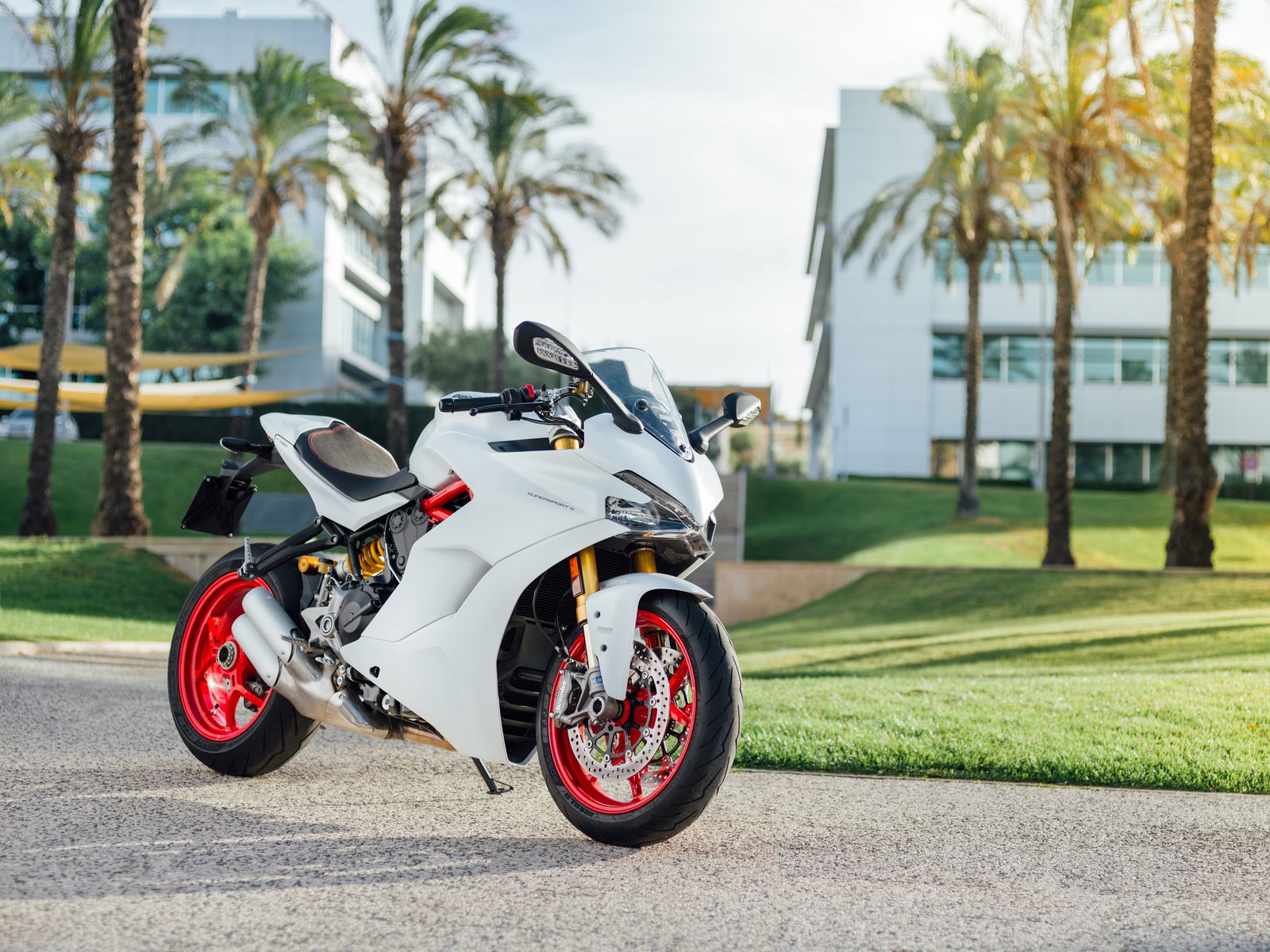
It comes in two flavours – the standard SuperSport for £11,495 (which I tested on the road) and the S model for £12,795 in red and £12,995 in white (which I rode on track).
Both bikes share the same 937cc Testastretta, eight-valve, liquid-cooled Desmodromic L-twin engine, which puts 113hp (at 9,000rpm) and 71.3lb/ft (at 6,500rpm) at your disposal. It’s the same lump you’ll find in the Hypermotard and the Multistrada 950, but with new crankcases, generator cover and cylinder heads because in this bike it acts as a stressed chassis member. Both models also have the same eight stage traction control, three stage ABS and three riding modes: Sport, Touring and Urban.
Differences between the standard bike and the S are simple enough: the S gets fully-adjustable Ohlins suspension front and rear, comes with the DQS (Ducati’s quickshifter) for clutchless up and down changes, and a pillion seat cowl. Nice.
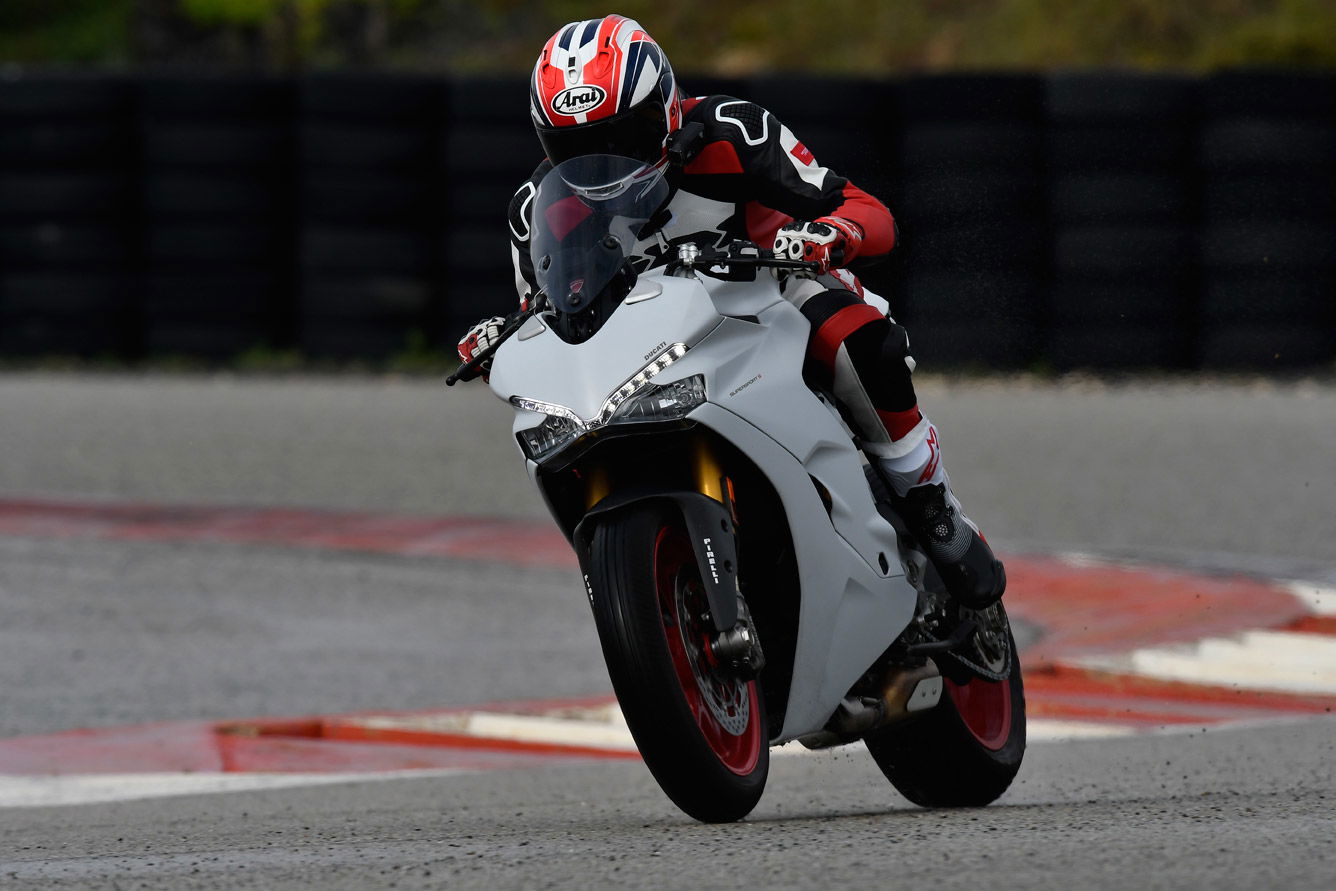
Those differences give the S a sportier edge over the standard bike and as I accelerated out of Circuit Monteblanco’s piss wet pit lane, tapping up through the gears was a slick experience with the quickshifter. Changing down is even better because not having to use the clutch means one less thing to think about and of course, a hand free to wave to your adoring fans the next time you do a track day. The DQS works really well and although the gear lever requires a fairly firm left boot, it works with precision and adds so much to the riding experience; it’s fun to use and a massive help on track…
… As is the engine – I find they always come in handy when it comes to motorbikes. The SuperSport’s motor delivers the kind of strong midrange that’s useful on the road but also has a final flourish of top end excitement as the rev counter gets closer to the 10,000rpm. Keep the engine spinning over 5,000rpm and you won’t go far wrong. That’s not to say you have to be pinning the engine to enjoy what it’s got to offer. Far from it – its performance is easily accessible and although 113hp won’t melt your face, there’s loads of fun to be had when it comes to trying to use it all.
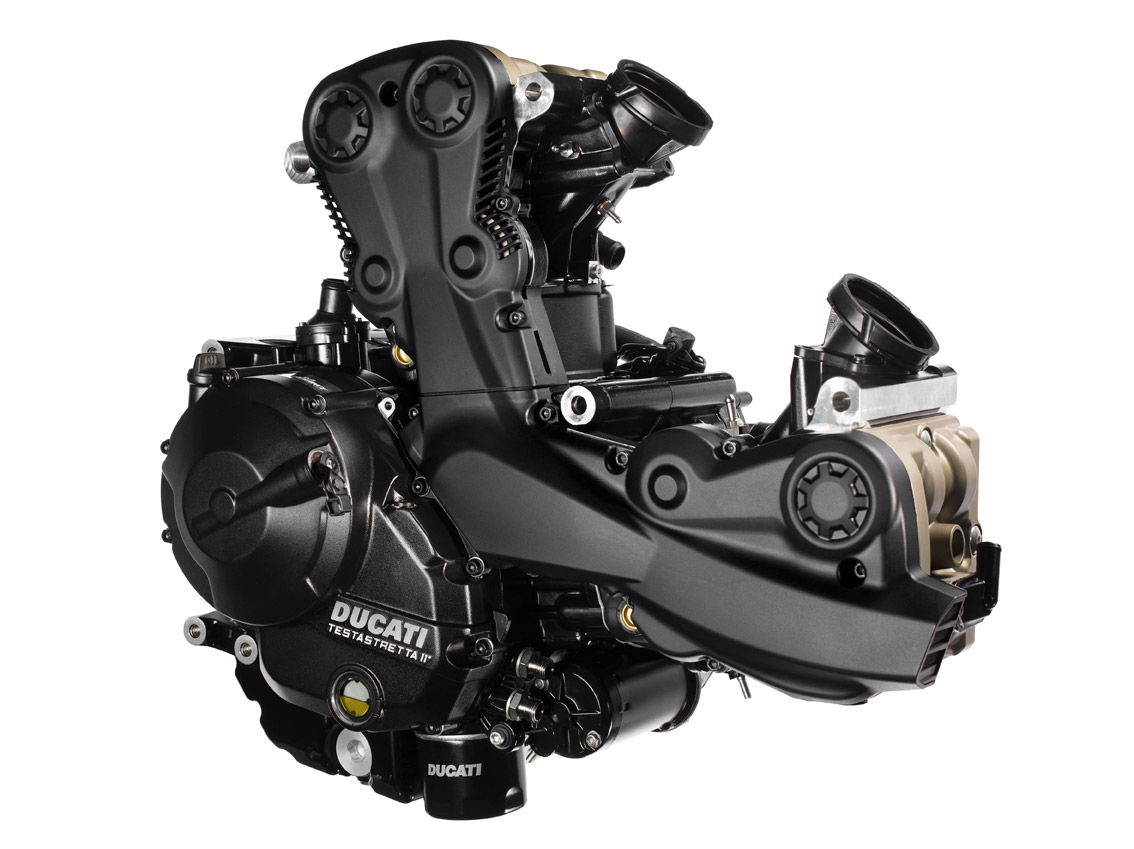
It sounds pretty good too. The S model I rode had an Akrapovic silencer and to my plugged-up ears it emitted nice full, thrumbing note. The standard bike is no mute either and the standard system gives off a nice pap-pap-pap burble and pop on the overrun – it reminded me of the sound made by the Scrambler Full Throttle with the Termignoni exhaust.
Being lazy with the engine under 3,000rpm elicits a gentle, chugging reminder that this is a twin-cylinder bike but other than that, the motor is smooth and tractable, with faultless fuelling and the response from the ride-by-wire throttle is spot-on in all three riding modes.
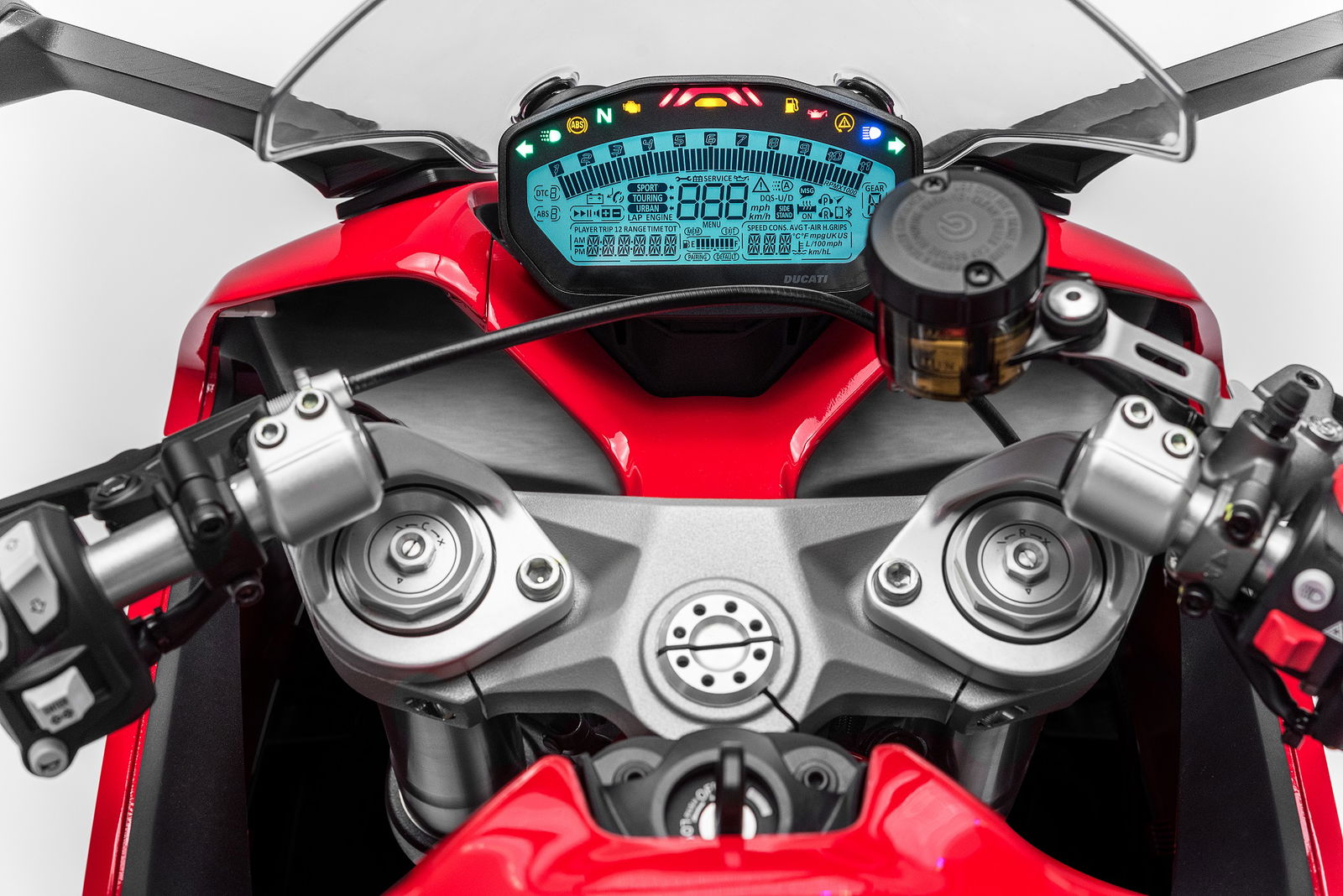
The engine is made all the more exploitable with Ducati’s refined electronics package. During my first track session on the SuperSport S, the bike was Touring mode, with traction at level eight (the highest setting) and ABS on 3 (highest again).
I wasn’t sure the Ducati Safety Pack could prevent a knobber like me lobbing it down the track, even though the bike had Pirelli wets on. But I should have had more faith. Although the traction light was constantly blinking any time I touched the throttle, it works unobtrusively and the engine never feels like it’s being unduly tempered by the software.
For the next session it was time to try Sport mode, with settings suited to the conditions (DTC 7 and ABS 2). Sport mode still delivers the full 113hp that Touring mode offers, but with a sharper throttle response that makes the SuperSport feel a bit more er… super and sporty – friskier.
Urban mode gives a notably softer throttle response and power is cut to 75hp – useful for the rain, poor conditions and making smooth progress in the concrete jungle. It's easy to flick between all the various modes and customise traction and ABS settings using the somple comtrols on the left bar.
On the road, the electronics provide a welcome safety net when conditions and surfaces are poor - simple really. It means that the SuperSport can be ridden on a sodden track day and still reward as much as it will when it's singing at full chat on a sunny day at your favourite track, and has a useful extra element of safety for the road, so it's got your back during a bleary eyed commute on a chilly January morning.
The suspension is similarly accomplished and although the Ohlins kit on the SuperSport S had been softened to suit a soaked track, it delivered the plush, refined feeling I’ve come to expect from bikes with gold bouncy bits. Once I’d gotten over wobbling around on the Pirelli wets and figured out that I wasn’t going to crash at every corner, the suspension did a superb job of communicating how much grip was available.
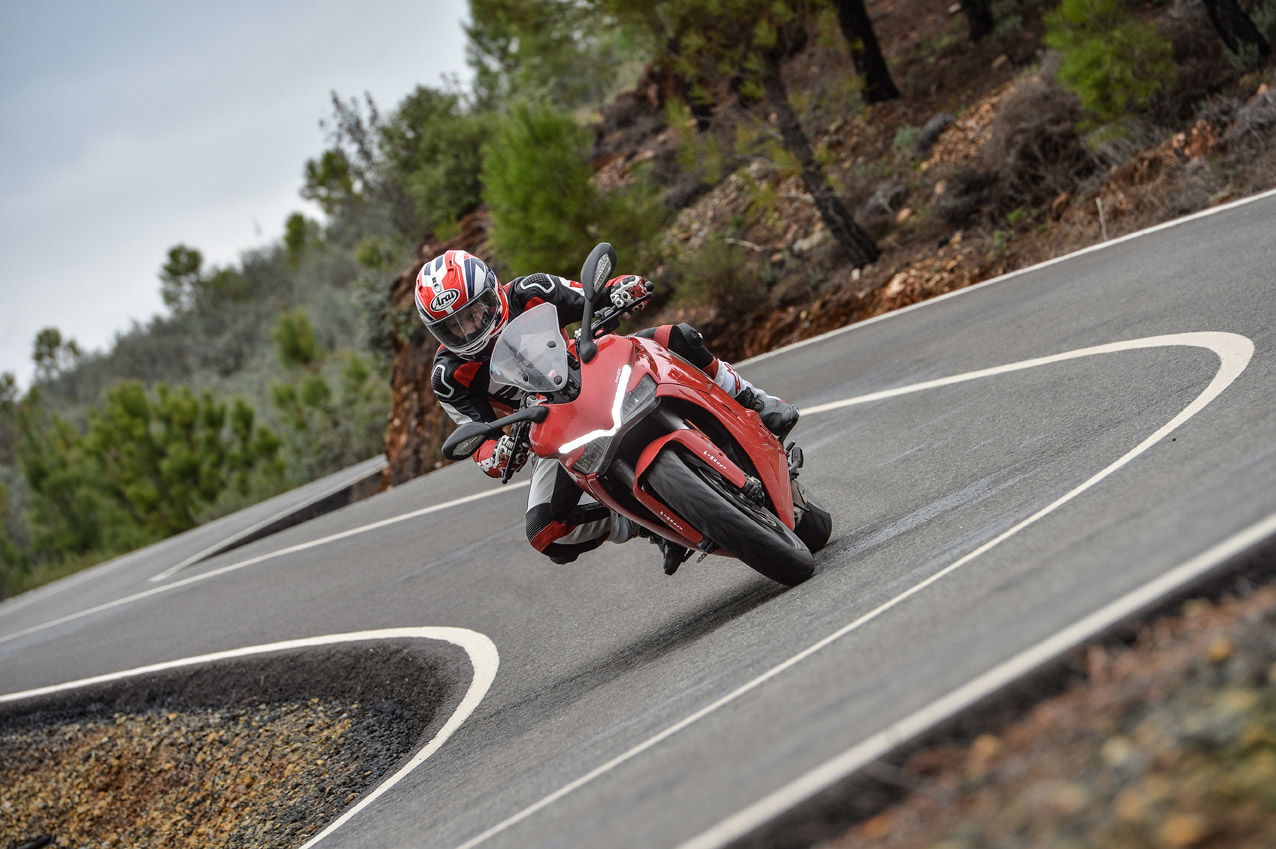
The suspension on the standard SuperSport, which has fully-twiddleable Marzocchi forks and a Sachs monoshock, also felt very good. Out on the bendy, flowing, rain-soaked roads west of Seville, it gave me a nicely damped and comfortable ride, if not the firmest. It’s about what I was expecting. Importantly, it remained unfazed by a chronically dire few miles of bump-strewn, shonkily surfaced roads, which were the worst I’ve encountered in Spain.
Away from such cack ‘mac, the SuperSport handles beautifully, and gets into bends with agility, deftness and lightness. On track, when hammering in to a corner hard on the brakes and changing down, the S was always stable, balanced and eager to turn.
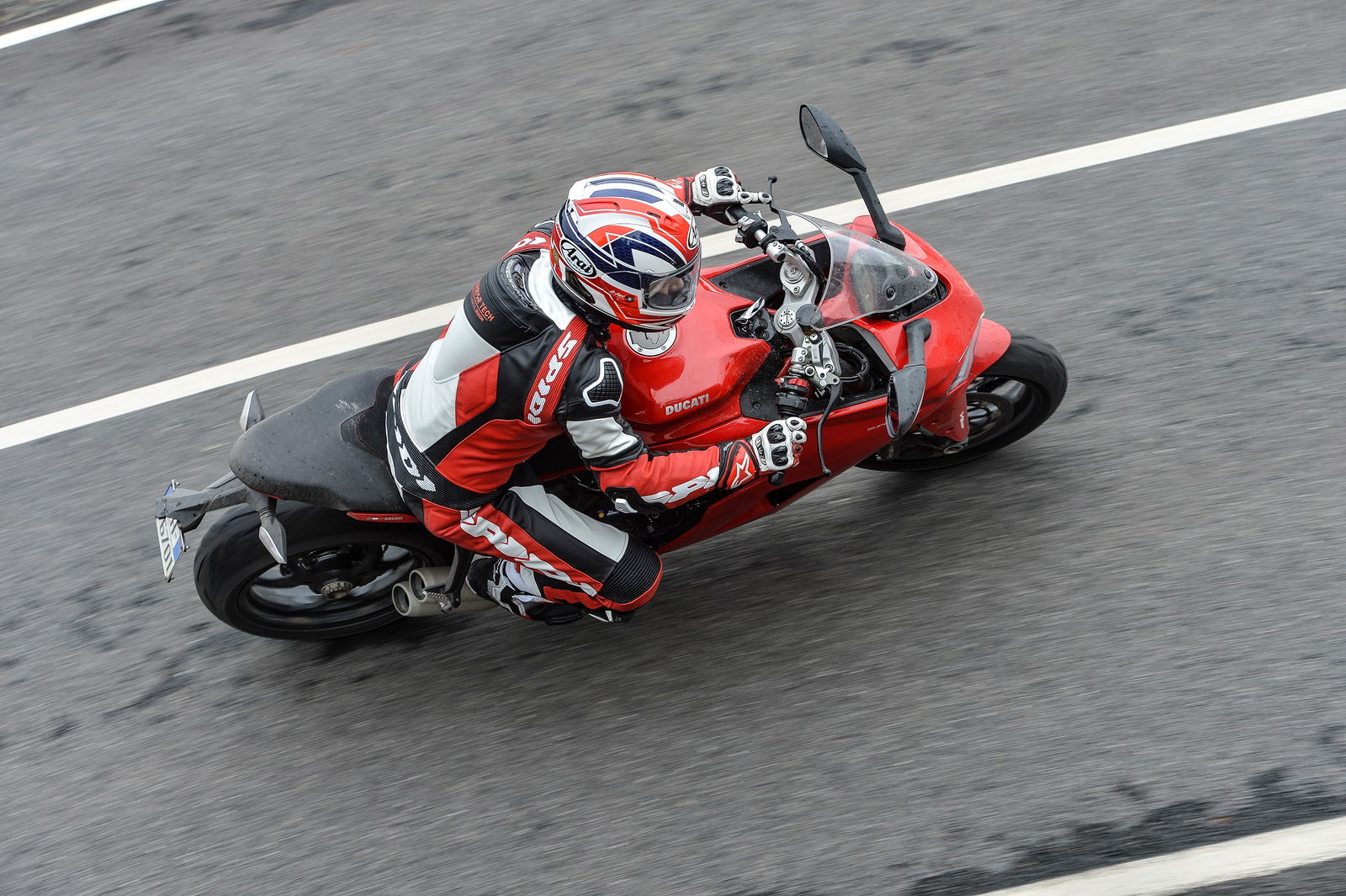
The standard bike felt superbly connected to the road and was always willing and capable of doing what I was asking. The SuperSportIt lacks the outright aggression of a more focused bike like the Panigale 959, but on road and track it delivers a magic blend of composure, comfort and sporting agility. And it’s superb on the road; Ducati really has got the handling and ride feel spot-on because it fully delivers across the gamut of the riding and rider its aimed at.
THE FINAL two ingredients that put the ‘Super’ in SuperSport are the tyres and Brembo brakes.
It rolls on the excellent Pirelli Rosso III rubber; its grippy, stable, reliable and unwavering performance in the dry was matched by a confident showing on twisty but slick launch route and I never felt like I was in danger of them doing anything unpredictable like some OE Dunlops I’ve tried.
The pair of Brembo M4-32 four-piston monobloc calipers and 320mm discs have ample stopping power come rain or shine. Feel through the non-adjustable front lever is excellent and thanks to the Bosch-controlled ABS, braking performance was consistent even on the worst surfaces. The first tug of the lever doesn’t yield bite the kind of bike you’ll get from a more track-focused bike, but the amount of power and progressive way in which it feeds in is perfectly suited to this bike’s road bias.
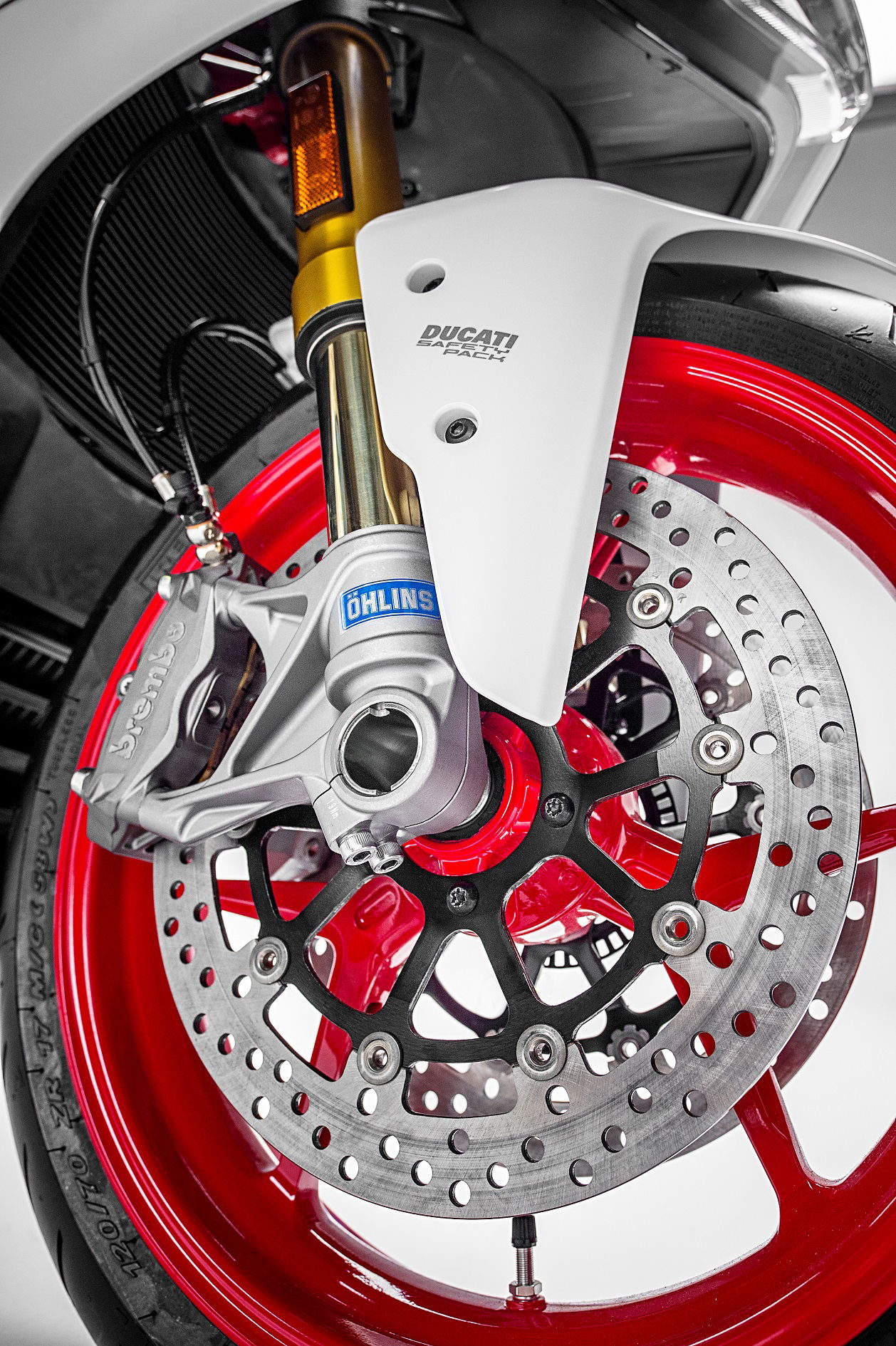
And let’s get back to the SuperSport’s road bias, shall we? I said that Ducati calls the SuperSport its ‘versatile sports bike’ but it also refers to it as a sports bike for the road and to that end, the Panigale resemblance is strong, most evident in the SuperSport’s handsome and purposeful-looking front end, complete with LED daytime running light and adjustable screen.
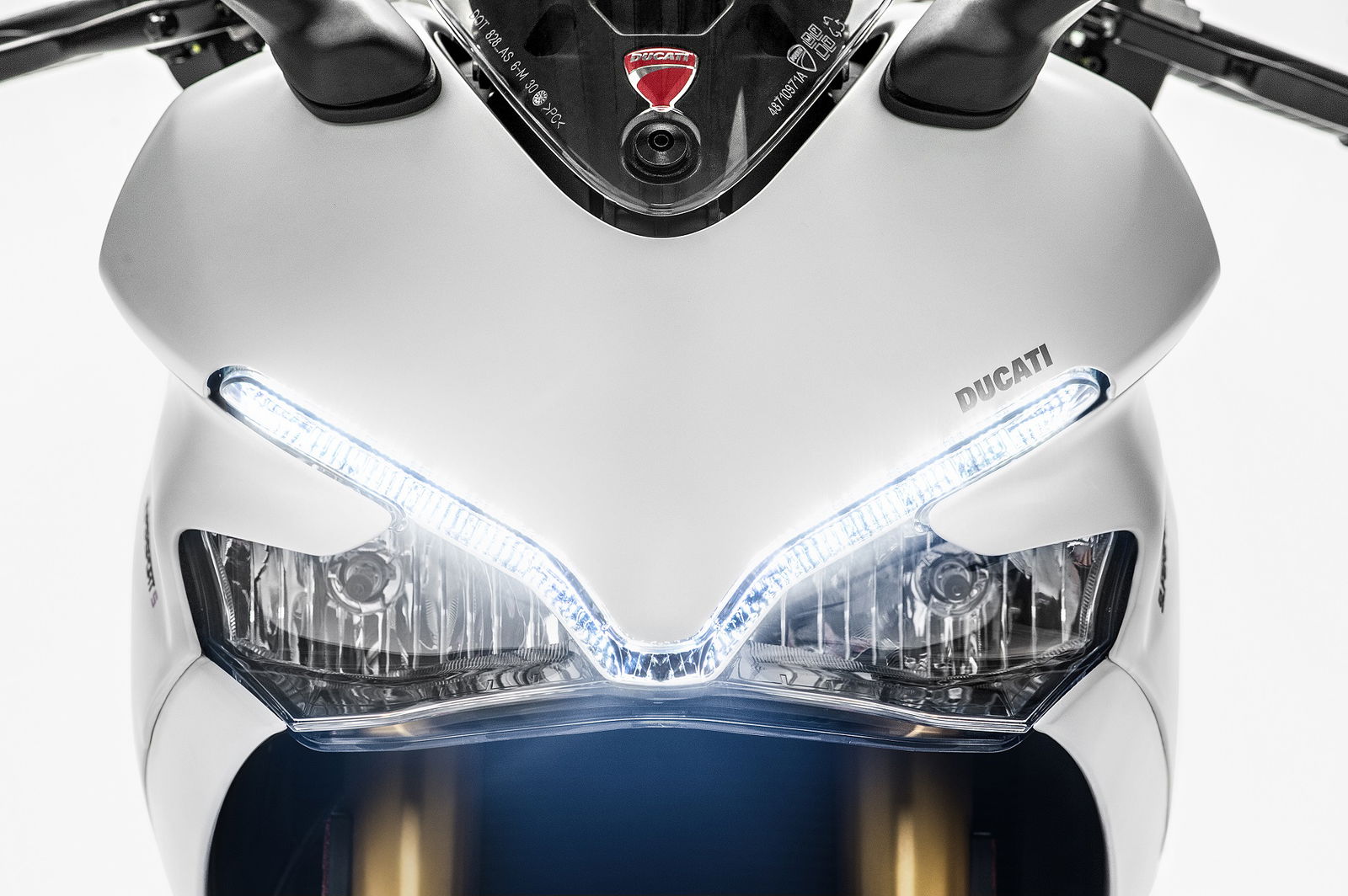
The screen has 50mm of adjustment and two settings – high and low. Changing between the two requires pushing or pulling it. I needed two hands to raise the screen up, otherwise I felt like I was going to damage it through pulling it around because the mechanism is quite firmly sprung. With the screen pulled up, wind protection is just OK because the screen is narrow so windblast can find a way around it.
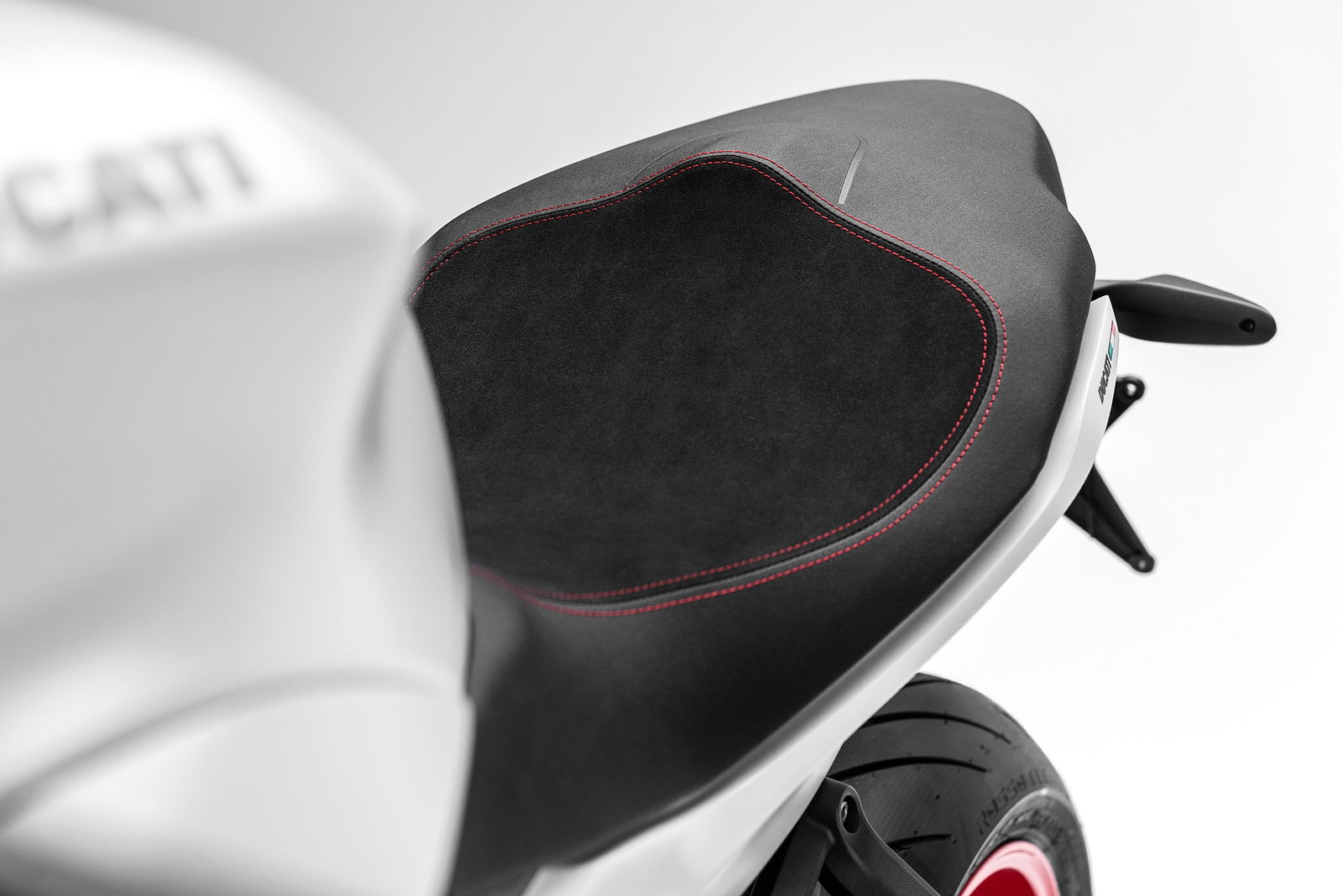
The SuperSport’s tail unit has a bit less in common with the Panigale-derived front end, so instead of the waspish, tapering point that you’d normally get on a sports bike, the large single-piece rider and pillion seat gives the rear of the SuperSport a gentle shape. It’s one of the main visual reminders that the SuperSport isn’t an out-and-out sports bike. Sit on it and you’ll find that there’s no face down, arse up business (you’ll have to wait until you’re home with the Mrs for that). Instead the seating position is less aggressive and neutral, and I found myself sitting in the SuperSport rather than perching on top of it.
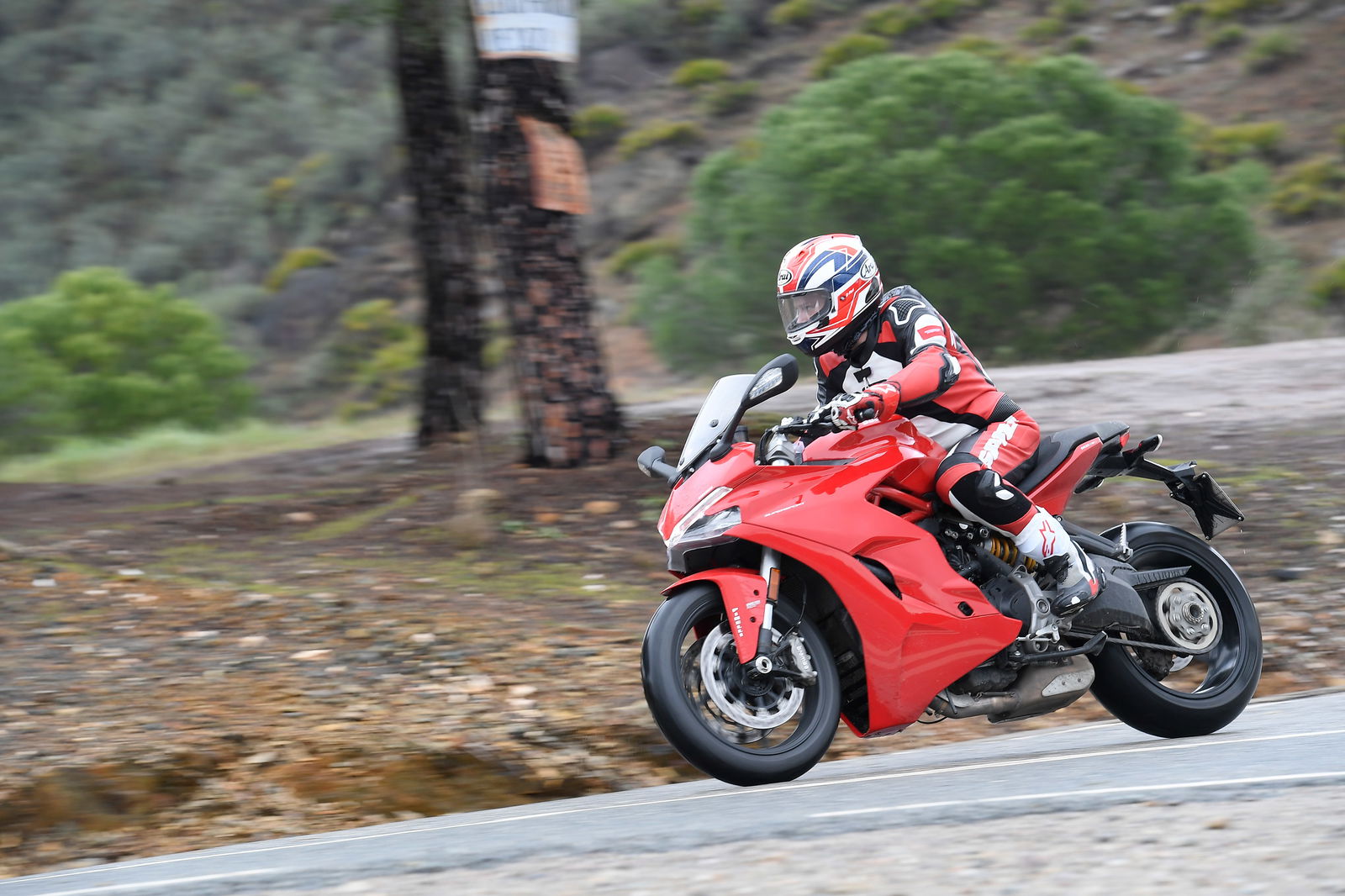
The seat proved comfortable during an afternoon out on the road and has a bit more give in it compared to your typical sports bike seat. The bike is also narrow like a sports bike and easy to move around on. With a seat height of 810mm, it should be manageable for a lot of people.
The other main reminder that the SuperSport is offering more comfort and versatility than your average sports bike comes from the high set bar position. The bars sit quite high above the top yoke, atop some brackets that I initially thought were ugly, but then I quickly stopped being bothered by them.
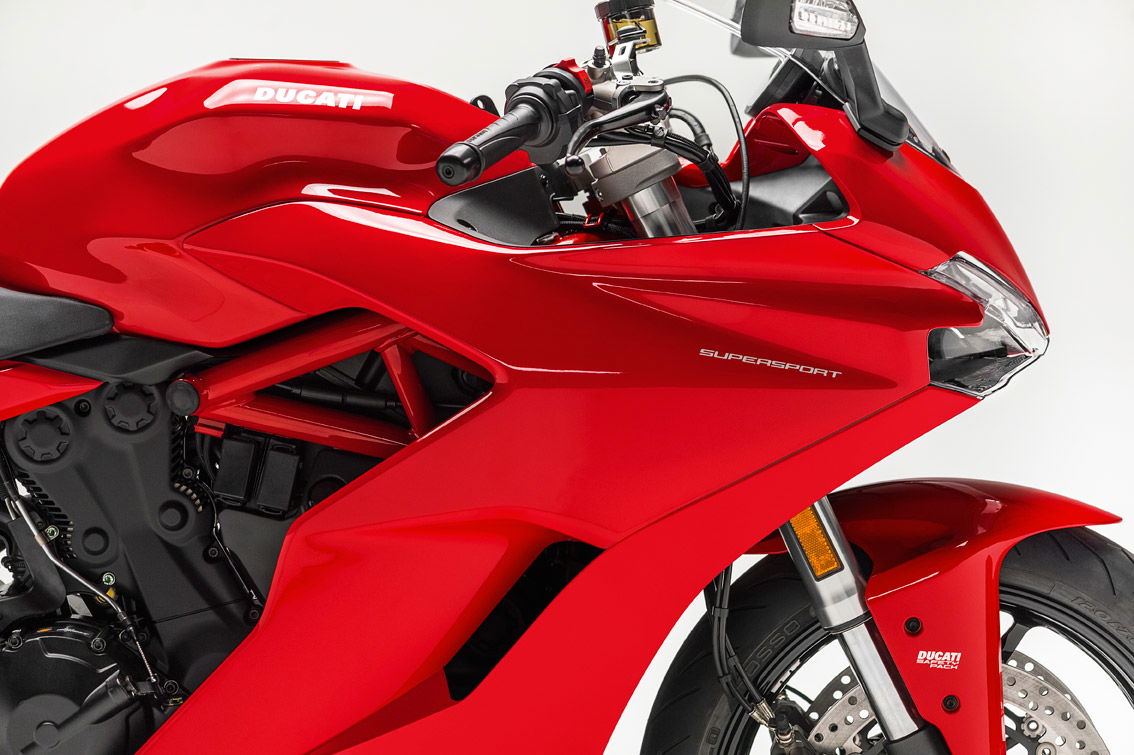
The bars still require a little stretch to get to but fall naturally to hand and if anything, I expected them to be higher than they are. The result is a ride position that’s definitely on the sporty side of the space inhabited by this bike – which is between sports tourer and sports bike. I’m not saying I could close my eyes and pretend I was on a 1299 Panigale (because I wasn’t hunched over the beautifully sculpted 16 litre tank), but by no means does the SuperSport feel neutered by the way it delivers a softened sports bike experience.
The amount of legroom and the position of the pegs also has echoes of sports bike ergonomics that have been dialled-but-not-dumbed-down a touch – lower and a bit further forward than a sports bike’s, but not so low that you’re folding into tight shapes to fit on it. For sure it’s comfortable but if you splash out on Ducati’s touring pack (panniers, larger screen and heated grip – price TBC) you’re unlikely to feel brand new after a long day in the saddle and Ducati itself says the SuperSport is for up to medium-length rides. But how long is a medium-length ride?
Criticisms of the SuperSport are that I found the mirrors could be quite vibey – mine seemed prone to a bit of movement, especially at low speed. When stopped during the road ride after about 100 kilometres, I also noticed that the tank on my bike had started to become marked and scuffed; it was unlacquered and really needs a tank protector as standard.
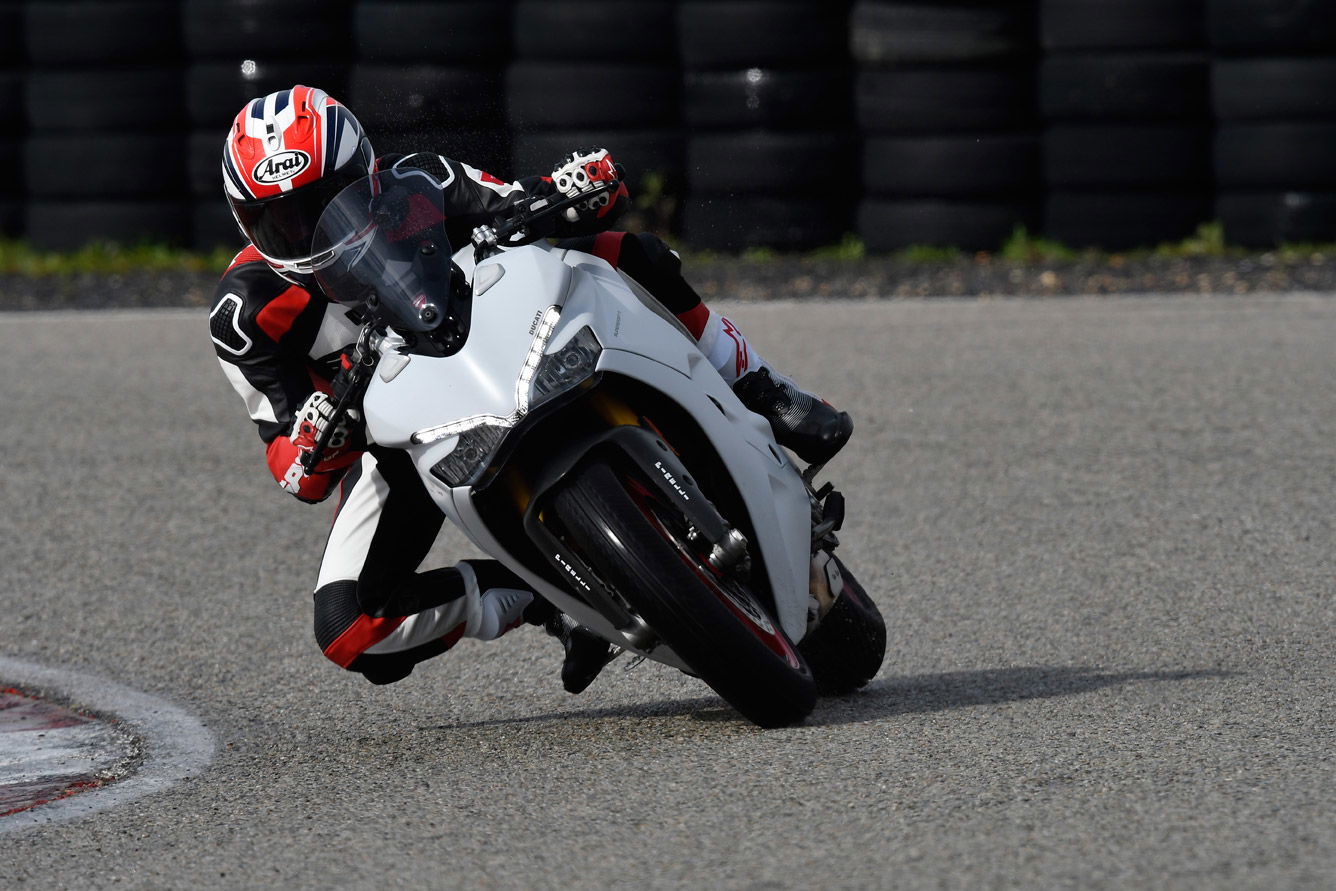
Apart from those two small issues, that’s it. The Ducati SuperSport is a fantastic bike on the road and a load of fun on a circuit.
If you bought one of these and primarily ride on the road and do the odd track day each year, it could be all the bike you need because it strikes a superb balance between sporting ability, excitement, comfort and accessibility.
The Ducati SuperSport really delivers on the ‘every day sports bike’ remit. Ducati’s sports bike DNA is in there and ready to deliver an engaging ride experience in a package that doesn’t demand as much from you as a full-fat track tool. It's just the right thing for my dad and everyone who wants to add a dose of comfort to their sporty riding, without relinquising the fun or feeling like they're riding something that's been heavily diluted.
Model tested: Ducati SuperSport and SuperSport S
Price: SuperSport - £11,495 / SuperSport S in red - £12,795 / SuperSport S in white - £12,995
Engine: 937cc liquid-cooled eight-valve Desmodromic L-twin
Power: 113hp at 9,000rpm
Torque: 71.3lb/ft at 6,500rpm
Suspension: Front – Fully-adjustable 43mm Marzocchi USD forks (SuperSport) and fully-adjustable 48mm USD Ohlins forks (SuperSport S) / Rear – Adjustable Sachs monoshock (SuperSport) and adjustable Ohlins monoshock (SuperSport S)
Brakes: Front – Twin Brembo M4-32 monobloc calipers and 320mm semi-floating discs / Rear – Two-piston Brembo caliper and 245mm disc
Weight: 184kg dry
Seat height: 810mm
Tank capacity: 16 litres
Colours: Red and white

